Tour reveals EMPAC’s behind the scenes treasures
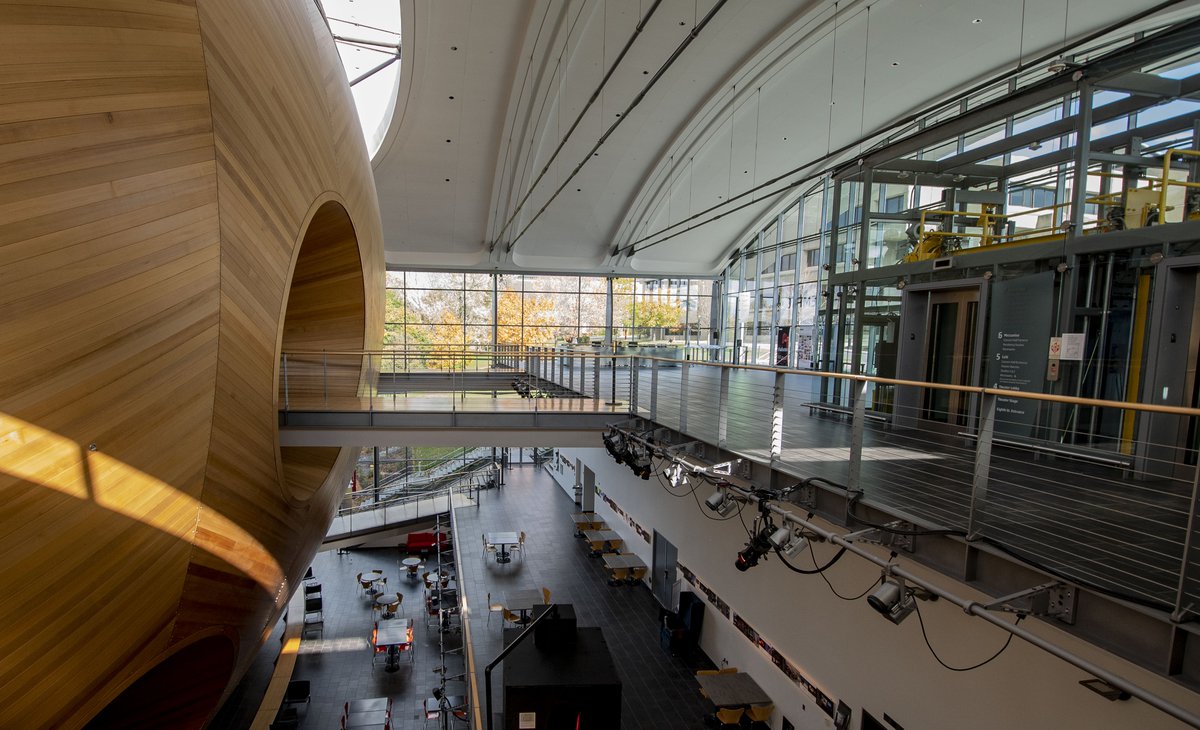
Lead Video Engineer Eric Brucker led an informative tour of the Experimental Media and Performing Arts Center’s public venues, private production rooms, and hidden spaces. Participants’ thoughtful questions and the stunning views of EMPAC delightfully kickstarted my weekend.
The tour featured four of EMPAC’s main venues: Studio 1—Goodman, Studio 2, the Concert Hall, and the Theater, but also uncovered usually unseen parts of EMPAC, like the backstage of the Concert Hall, the machine room, underneath the seats of the Theater, the Theater control room, video and sound production rooms, equipment, and even storage spaces.
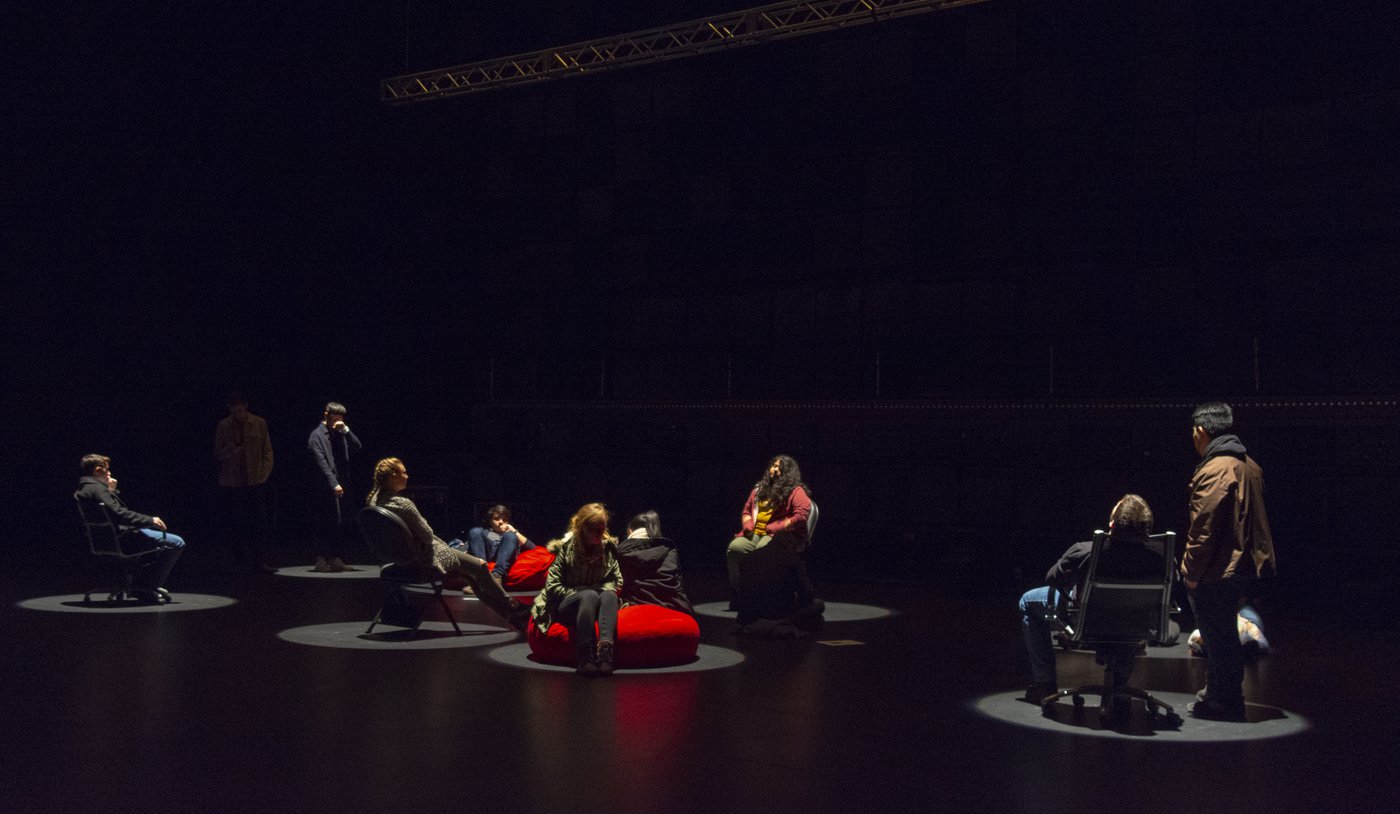
Studio 1—Goodman and Studio 2
These studios are two rooms completely separate from the rest of the building. The Goodman Studio lies on a separate foundation, and Studio 2 is carried on metal springs beneath the floor. These studios allow for complete customization of the space—lights and images can be projected anywhere in the room—and the innovative acoustic wall tiles provide artists, researchers, and experimentalists with endless exploration opportunities.
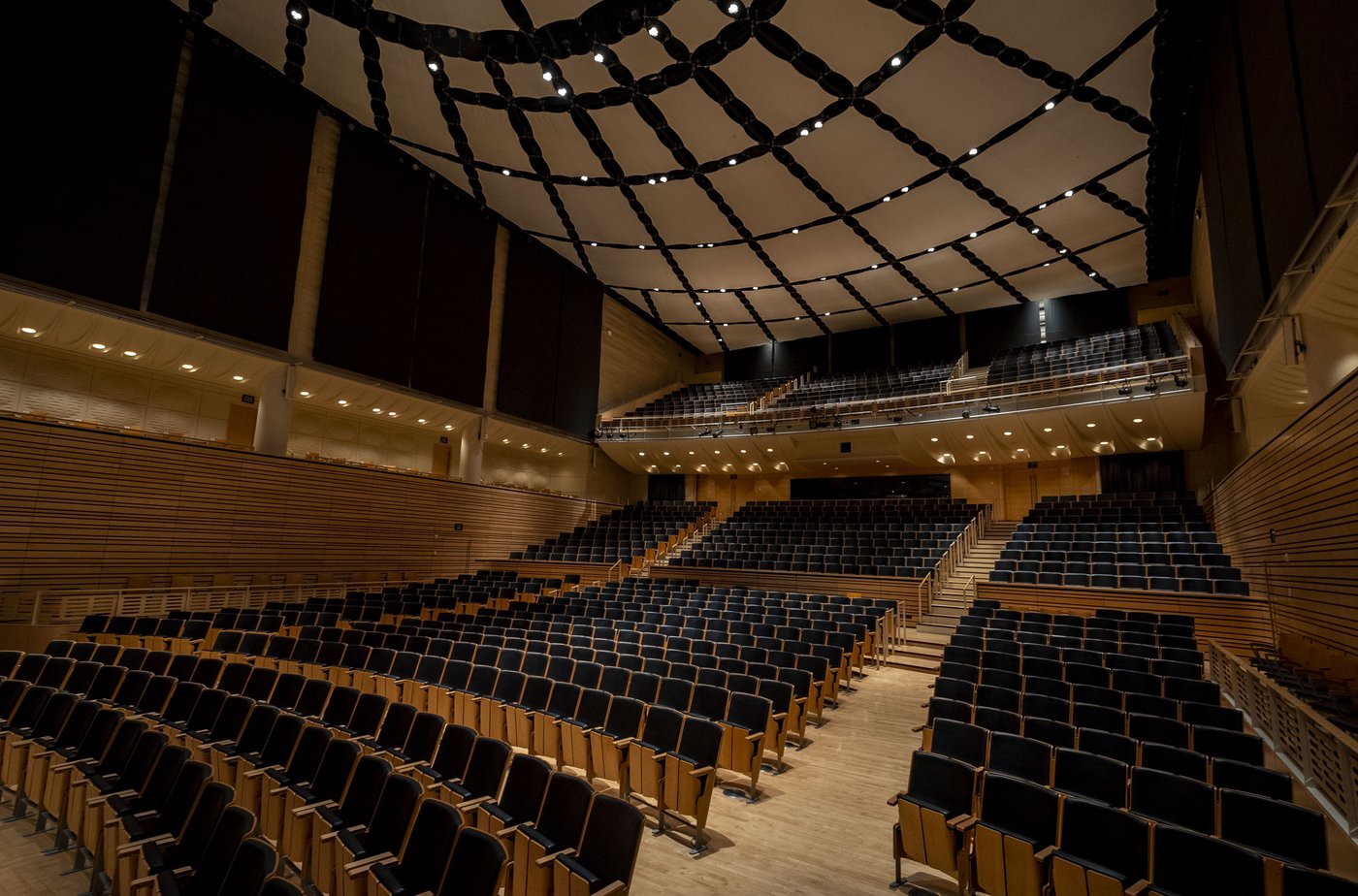
The Concert Hall and backstage
The scene of Josh Groban’s recent performance, this unique space features a fabric ceiling and an circulation system in which air is soundlessly circulated under seats rather than by overhead fans, to preserve the acoustics of the hall. For screenings, the hall allows for high-definition video to be projected on a massive 56-foot wide screen. The architect’s fulfilled vision for a hall with convex walls enables performers and instruments to be heard clearly throughout its entirety.
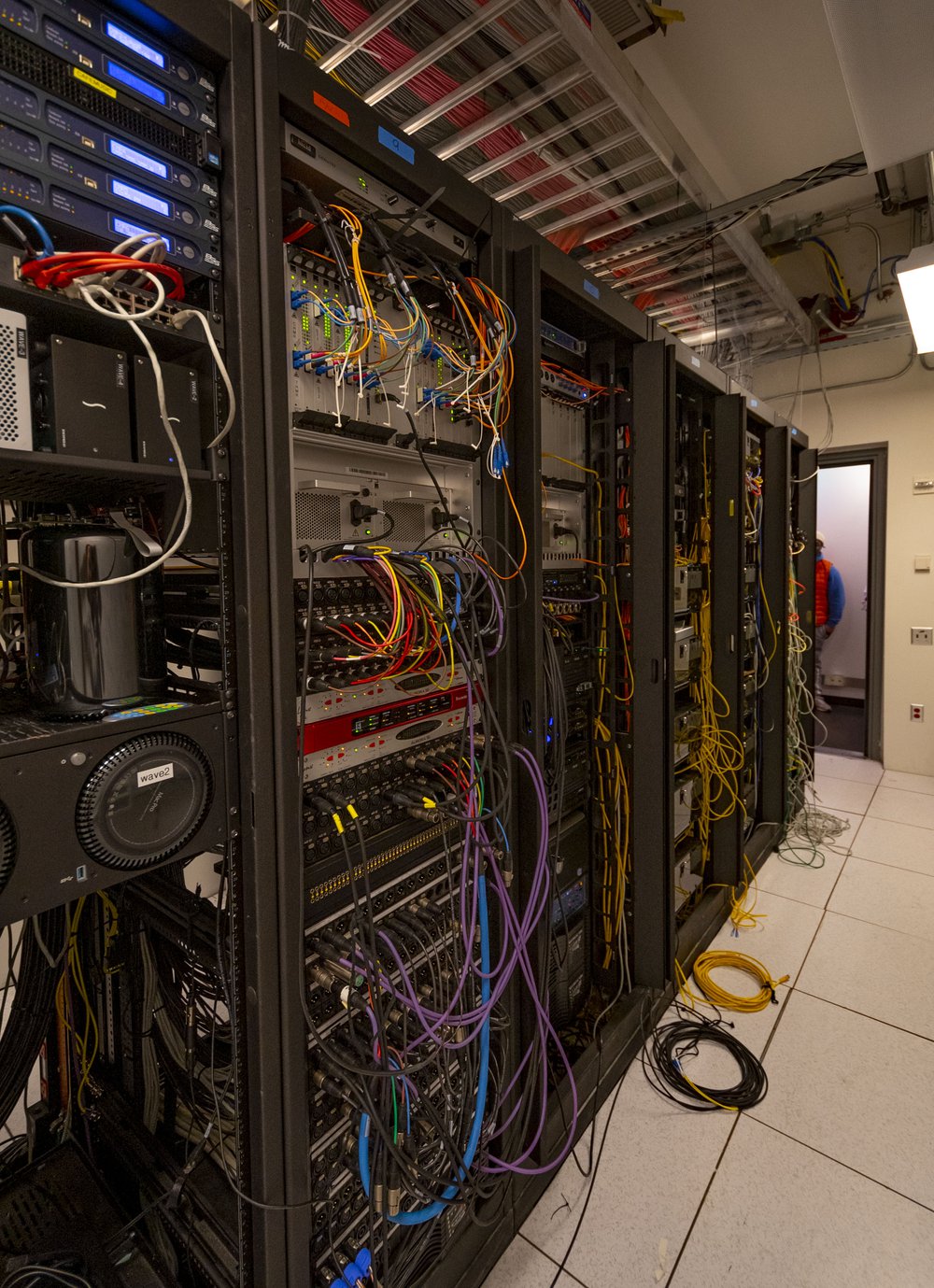
The machine room
The room was loud and noisy, which is fitting since the room is the source of EMPAC’s entire audio and video processing systems.
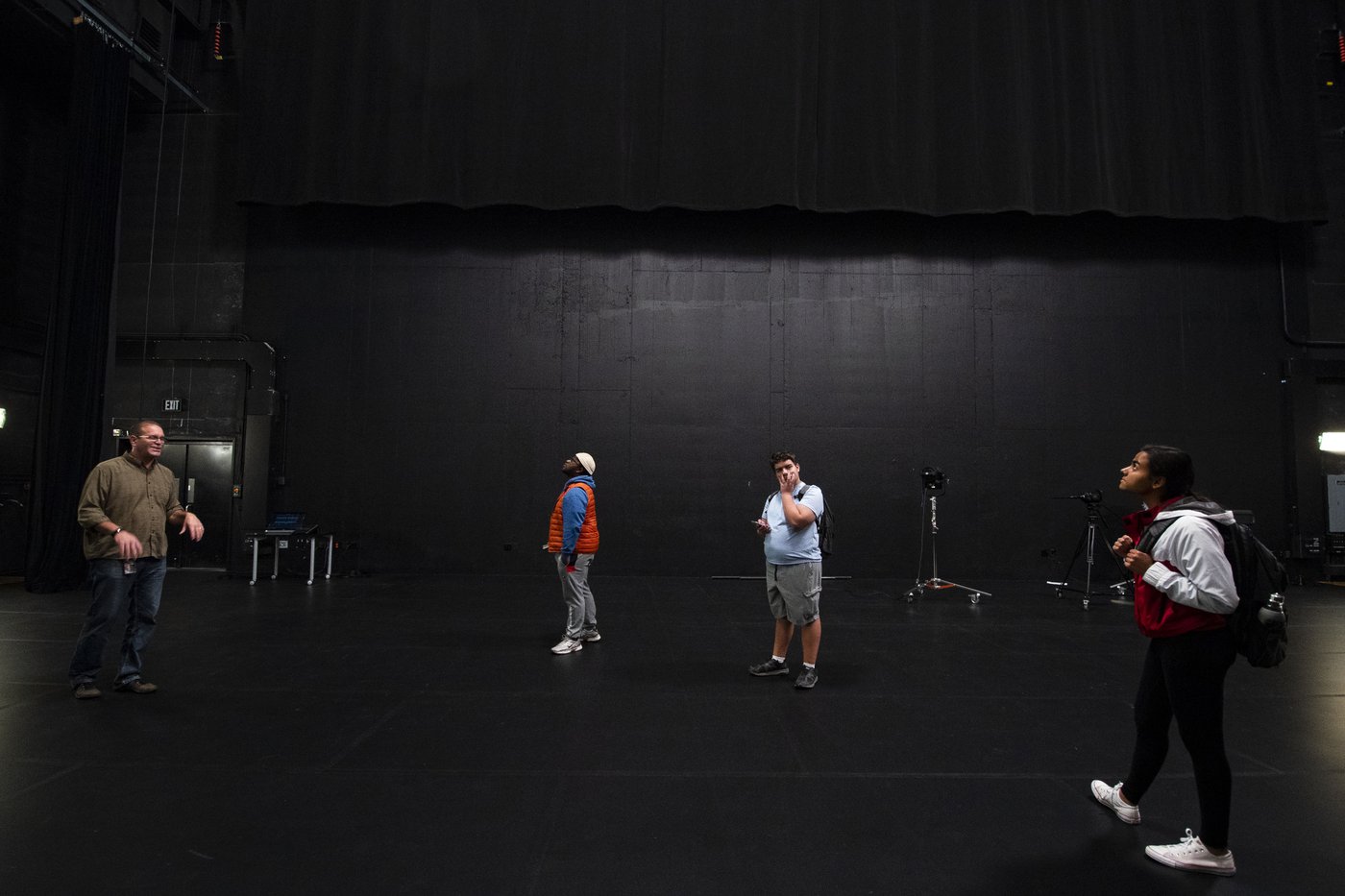
The Theater
The Theater, which hosted the recent Fall Town Hall Meeting, is built with a uniquely low stage to maximize the connection between the performers and the audience. Regardless of where an individual is seated, he or she will feel close to and even a part of the performance. Interestingly, the Theater has been built with accommodation for a larger audience in mind. If in the future more seats need to be added for performances, the stage can be lowered to make room for more seats.
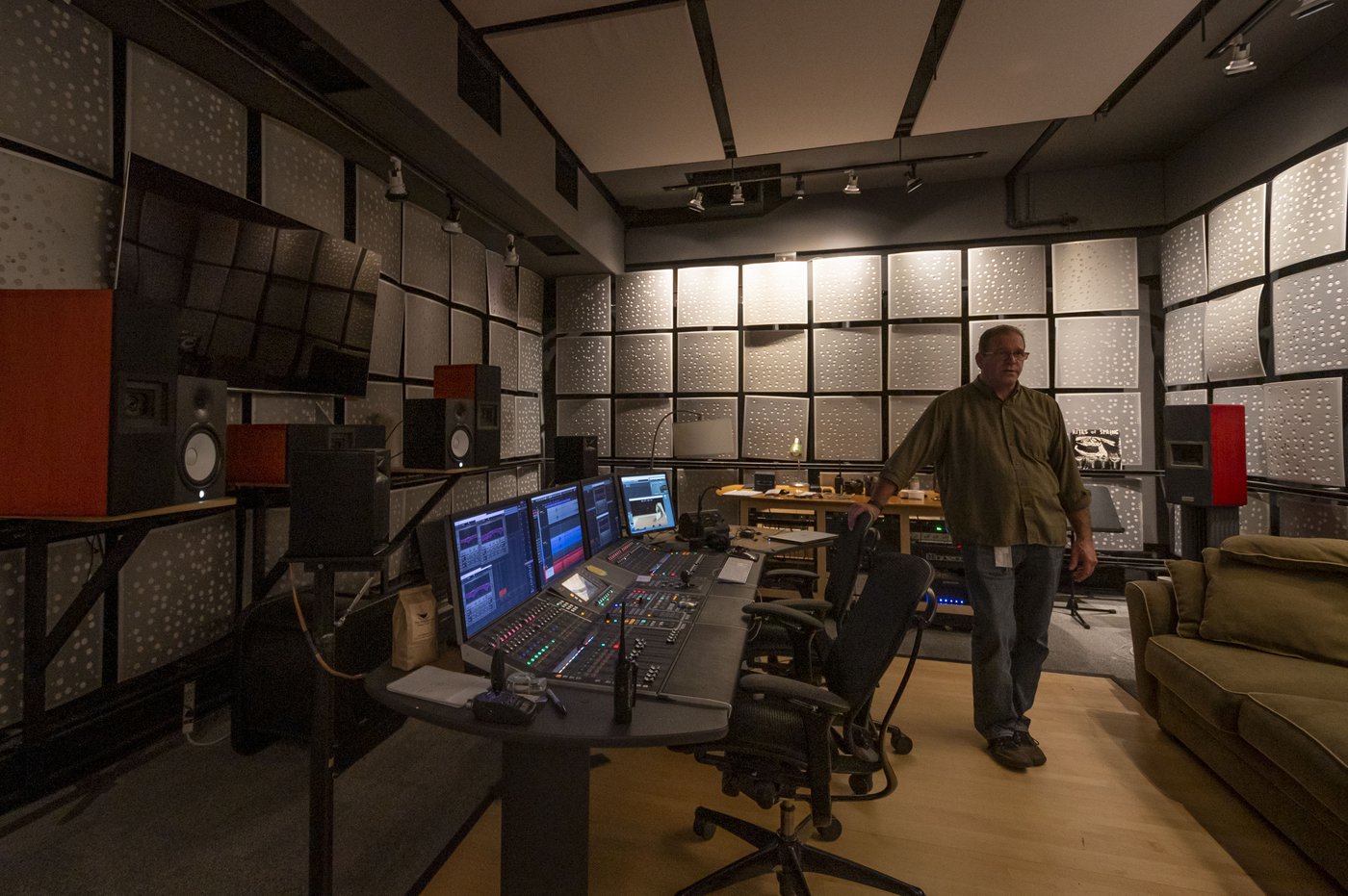
Video and sound production rooms and equipment
Production suites are fully equipped with software and facilitate the collaboration of artists to develop their work. EMPAC has its own in-house staff which can assist visiting artists in their projects, or artists can choose to bring their own individuals to manage their projects' video and audio production.
More students should attend EMPAC tours in the future; only five individuals joined the last week’s. They are held on the first Saturday of every month at 11 am. Each month, the tour is led by a different EMPAC staff member and focuses on a different perspective. While this tour focused on video as it was led by the lead video engineer, other tours are led by curators who focus on the art pieces in EMPAC, and some focus on architecture or other aspects of the building. Remember to leave an empty slot in your calendar next month if you are interested.

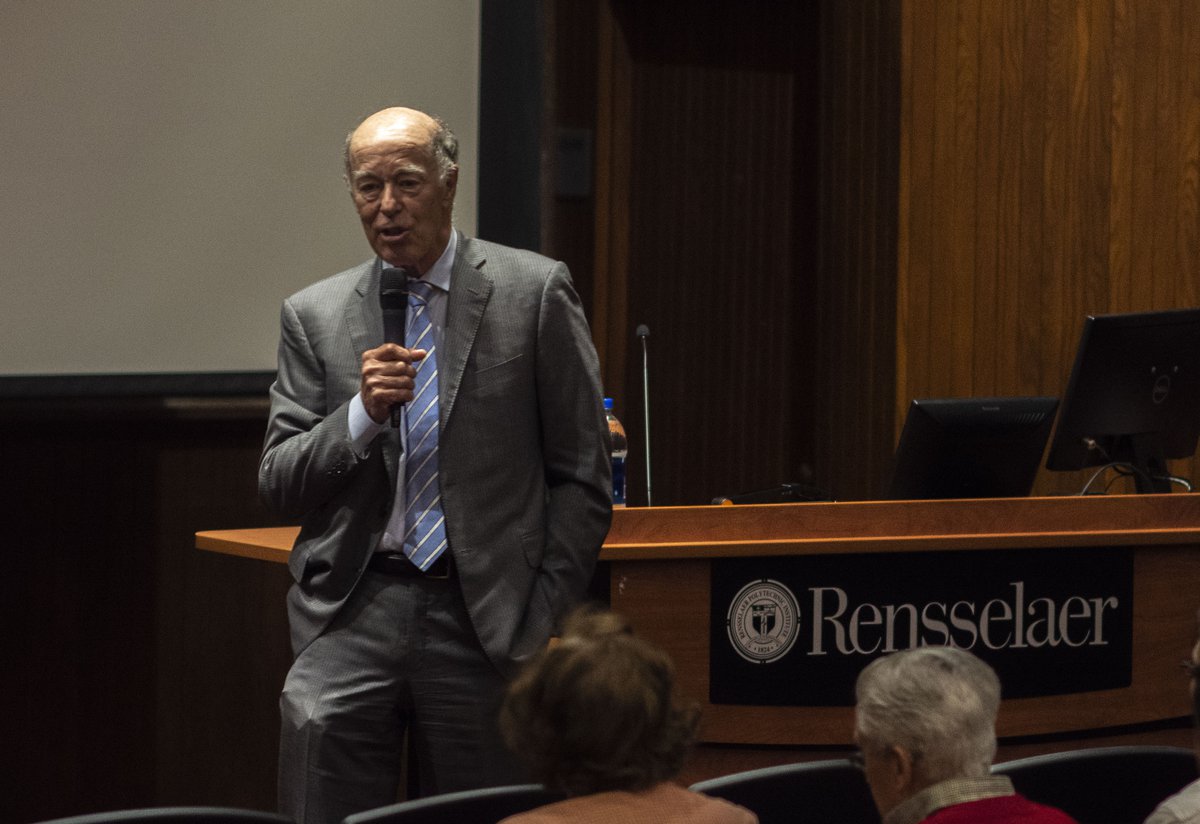 Guest Speaker
Guest Speaker
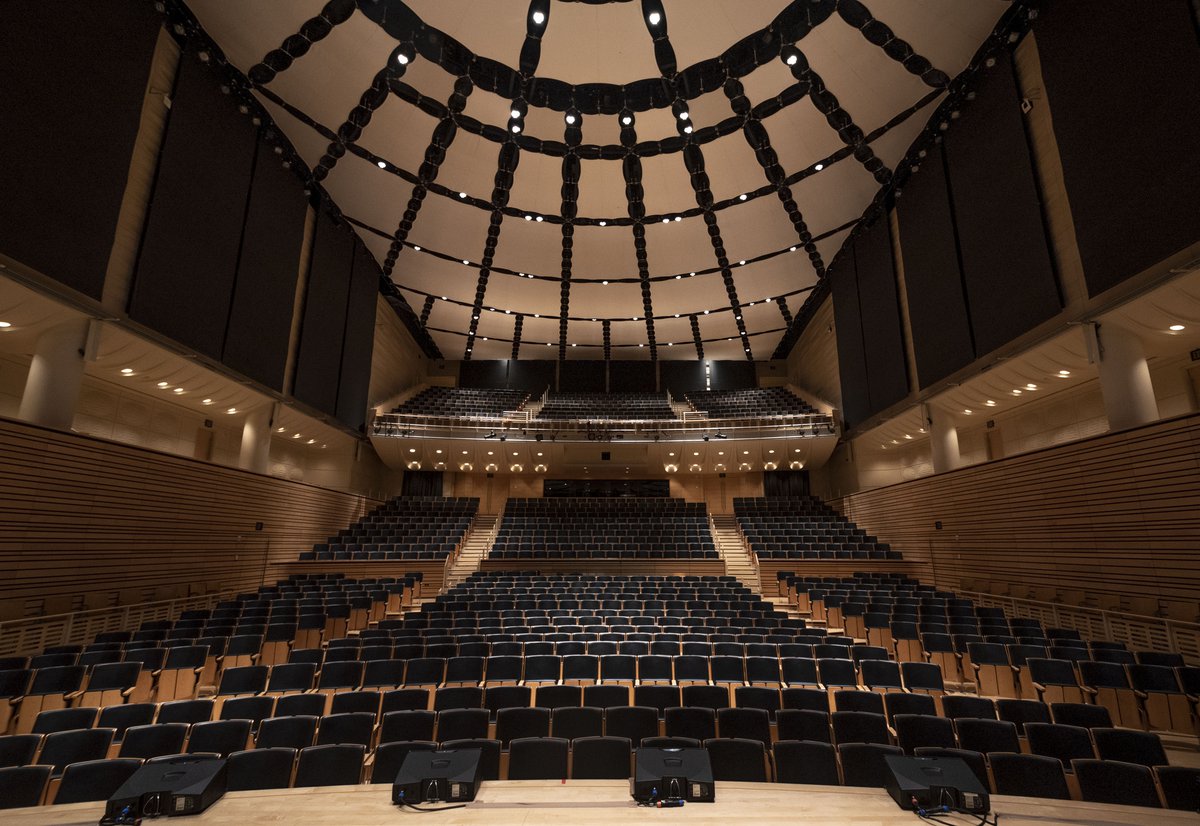 Empac Event
Empac Event
 Empac Event
Empac Event
 Community Recipes
Community Recipes